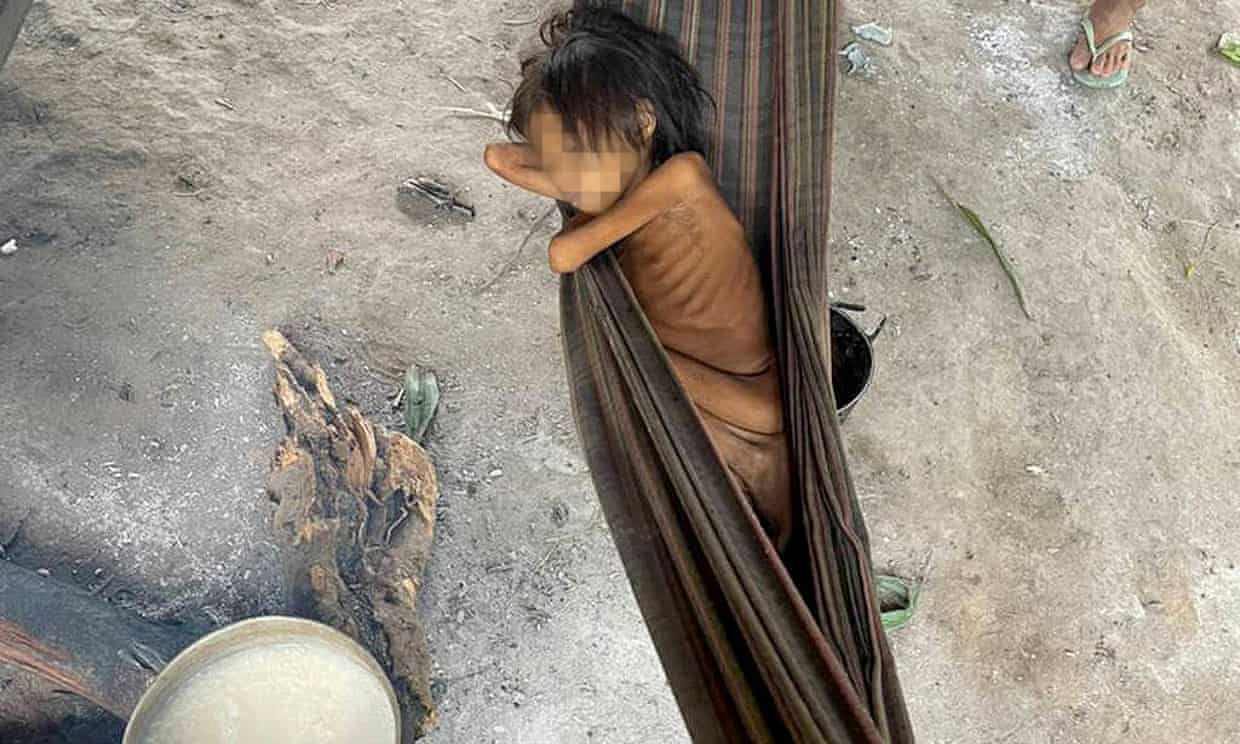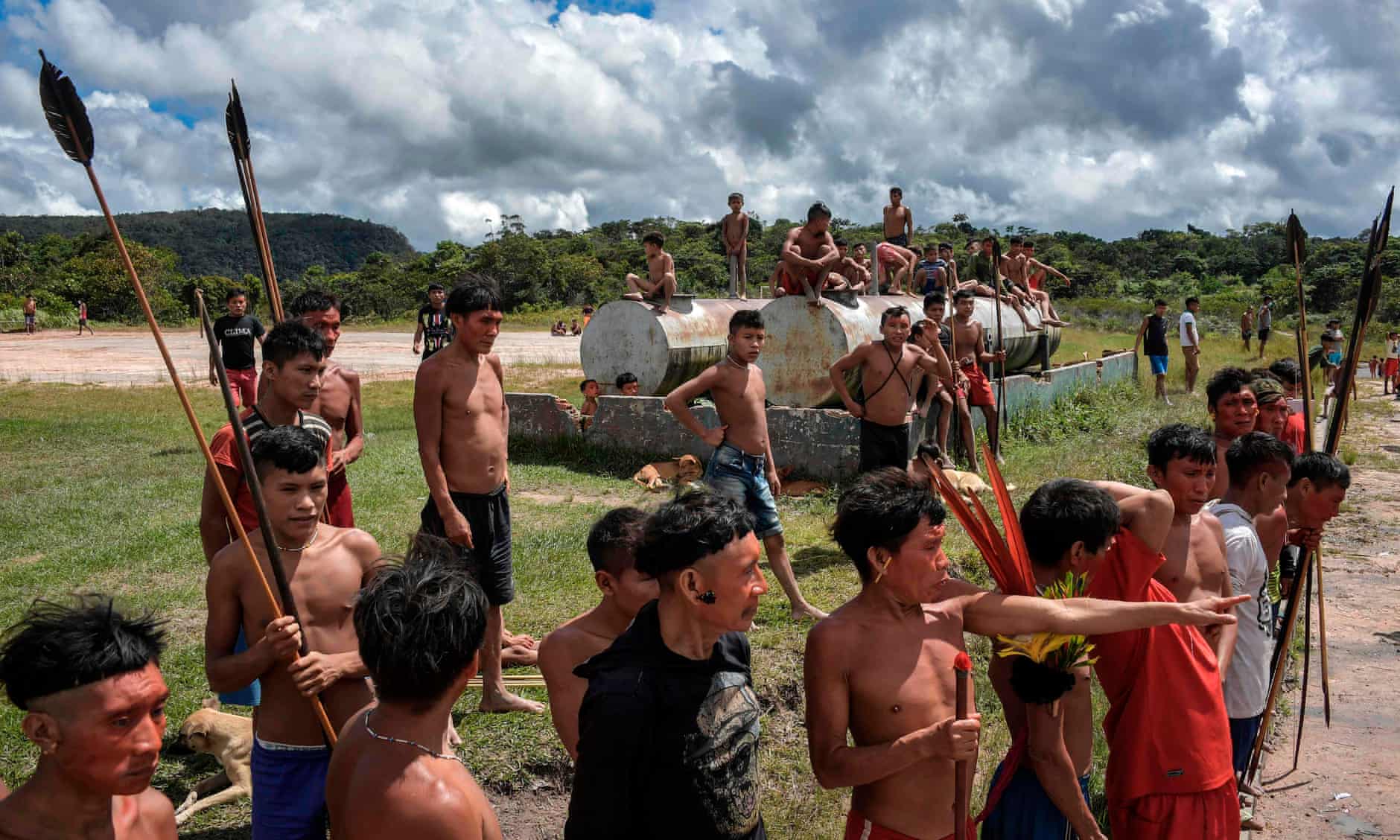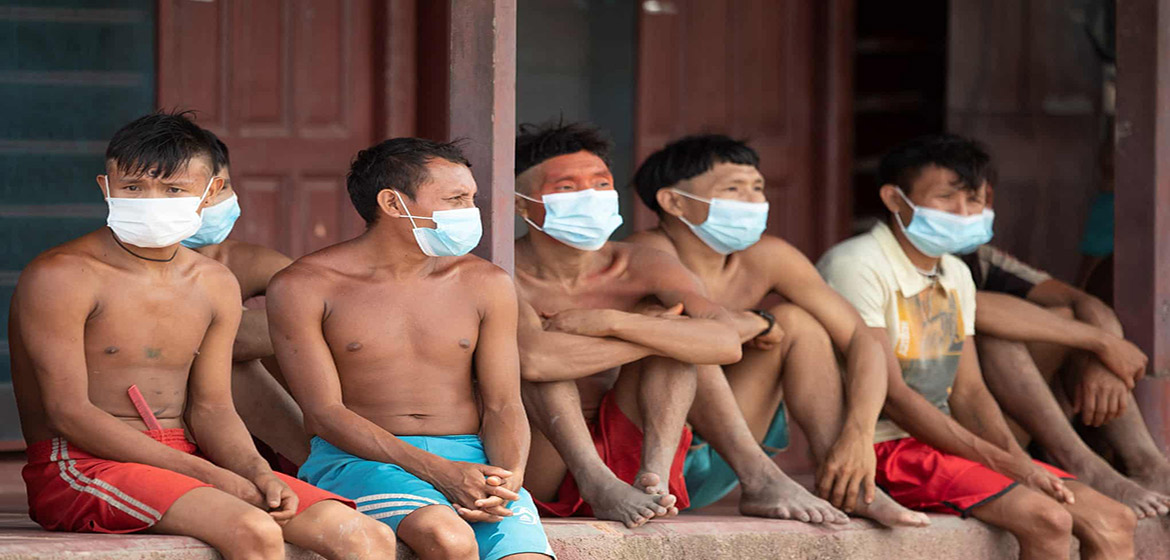By Flávia Milhorance
Indigenous people in the grip of a humanitarian crisis as Bolsonaro gives encouragement to wildcat miners with designs on their rainforest territory
A photograph of an emaciated Yanomami girl, huddled listlessly in a hammock beside an empty cooking pot over an unlit fire. Shaky footage of indigenous people screaming as they flee in panic to a soundtrack of gunfire.
Shocking images shared on Brazilian social media this week have cast a spotlight on a spiral of violence, malnutrition and disease that threatens fresh devastation for the Yanomami people and their ancestral territory in the Amazon state of Roraima.
“The Yanomami are facing a humanitarian crisis, which is as critical as at the end of 1980s when the territory was invaded by 40,000 illegal miners,” said anthropologist Ana Maria Machado, a member of the .
About 27,000 Yanomami live on the reserve which is the size of Portugal. But in recent years, the territory has seen a new invasion by about 20,000 wildcat miners – known as garimpeiros. Last year, the influx caused a 30% increase in illegal mining inside the territory, and it has also brought infectious diseases.
The past five years have seen a in malaria cases on the reserve, while in the first eight months of 2020, nearly 14,000 new cases and nine deaths from the disease were .

An emaciated Yanomami girl in Maimasi village, Roraima state, released by a Catholic missionary. Photograph: Handout
The coronavirus pandemic has only worsened the situation: say that more than 1,640 Yanomami people have contracted Covid-19 and 13 people died of it, although indigenous leaders say the true figure is higher. So far, 60% of the Yanomami have been vaccinated, according to an indigenous council.
“Uncontrolled illegal mining, the neglect of indigenous health, and epidemics of malaria and coronavirus have created tensions that are growing like a pressure cooker about to explode,” said Machado.
“We are facing many difficulties: there is a lack of professionals, medicines such as chloroquine to treat malaria, and equipment,” said Júnior Hekurari Yanomami, the head of Condisi-YY, an indigenous health council.
Hekurari said that tribal leaders had repeatedly appealed to federal authorities over the land invasions and health crisis.
“We have no support from the federal government,” he said. “But the government has been doing everything to disrupt indigenous health since 2019.”
That was the year Jair Bolsonaro took office, and tensions between land grabbers, illegal miners and indigenous people have increased steadily since the start of his administration.
Bolsonaro has supported legislation to and that would transfer ownership of large swaths of land to illegal squatters. He has also emboldened miners, loggers and land-grabbers by weakening Funai, the federal agency charged with protecting Brazil’s indigenous population, and repeatedly claiming that indigenous territories are “too big”.
“Bolsonaro gives a green light to all types of illegality in the reserves,” Machado said.
The recent outbreak of violence came after indigenous people blocked miners from using the Uraricoera river to reach one of their camps. In retaliation, garimpeiros carried out a series of attacks on isolated villages, where they exchanged fire with Yanomami.
Three garimpeiros died and five people, including one indigenous person, were injured in the 24 April attack on the village of Palimiú, said Hekurari, who visited the territory soon afterwards.
On a second visit to the village, Hekurari was accompanied by federal police, who also exchanged fire with heavily armed men dressed in black. There were no casualties that time, but signs of the violence were everywhere, he said. “We saw bullet holes everywhere, at the school, houses. It was very serious.”

Members of the Yanomami ethnic group wait for Covid-19 tests in the indigenous land of Surucucu, in Alto Alegre, Roraima state, last July. Photograph: Nelson Almeida/AFP/Getty Images
Federal police in Roraima did not respond to a request for comment, and Funai said it was still investigating the incidents.
On Thursday, troops and police officers were dispatched to Palimiú to prevent new confrontations, but the violence has already forced a team from the health ministry to leave the village.
The pandemic has food insecurity across Brazil, but particularly in indigenous communities, where malnutrition was already a serious problem. Eight out of 10 Yanomami children are malnourished, according to a Unicef .
After the image of the starving Yanomami girl went viral, she was admitted to a public hospital in Boa Vista where she was treated for malaria and malnutrition.
But, Carlo Zacquini a Catholic missionary who released the picture, said the region where she lives lacks basic healthcare. “There are villages away from health units that have been without care for months, sometimes years,” he said.
Zacquini, who has worked with the Yanomami since the 1960s, did not reveal the author of the picture, for fear of retaliation from authorities.
“Releasing the photo brings risks, but it was more than time to do something,” the 84-year-old said.
Source:
Related to SDG 10: Reduced inequalities and SDG 16: Peace, justice and strong institutions



